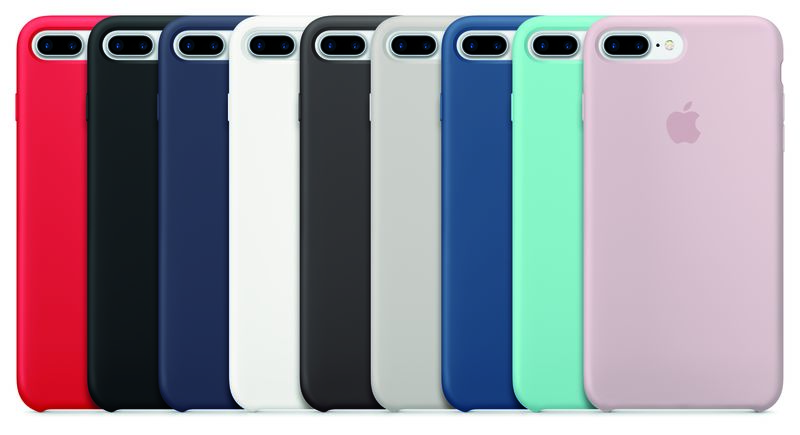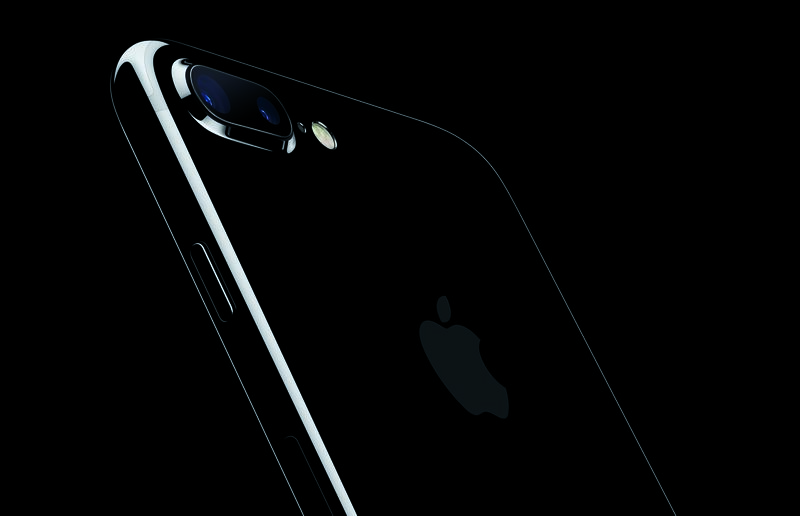Before getting technical, let’s zoom in on the devices’ appearance and on a major upgrade on the phones’ unibody enclosure that will skyrocket two aspects of their durability to never-before-seen heights. Both the iPhone 7 and the 7 Plus sport the same aluminum body that their previous-generation ancestors had, but the antenna bands were moved to the bottom and top edges, rendering them barely visible. As for colorways, there are new kids on the block joining gold, silver, and rose gold: a more conservative black with a matte finish, and a deep, high-gloss jet black, with the latter replacing space grey on the iPhone color palette. The jet black finish will only be available on the 128 GB and 256 GB models.
If you’re guilty of listening to music or to your favorite podcast on your iPhone while taking a shower, or while chasing after rattle snakes on faraway dunes, we have great news for you: both the iPhone 7 and the iPhone 7 Plus are water- and dust-resistant, boasting an IP67 rating. The IP67 rating certainly sounds edgy, but what does it mean? Two-digit IP (Ingress Protection) codes are set by the International Electrotechnical Commission in order to measure the protection enclosures provide for electrical equipment. To put it short, it means that Apple’s latest masterpieces achieved the highest rating for dust resistance, and the second-highest rating for water resistance, which sure sounds encouraging, but does not, under any circumstances, green-light ill-considered experiments.
The screen sizes and resolutions remained the same – 4.7 inches and 1,334 x 750 pixels, 5.5 inches and 1,920 x 1,080 pixels for the iPhone 7 and the iPhone 7 Plus, respectively -, but thanks to a wide color gamut and 25 percent added brightness, the Retina HD display delivers the most brilliant and vibrant cinema-standard colors you’ve ever seen on an iPhone.

As we’ve all expected, the cameras have also leveled up. The iPhone 7 has a 12 MP rear camera and a front-facing 7 MP FaceTime HD camera that is a dream come true for selfie-enthusiasts. The rear camera’s f /1.8 aperture allows up to 50 percent more light onto the camera sensor than its predecessor, ensuring that you’ll be able to snap breathtaking photos even in low-light conditions. It also has optical image stabilization to reduce motion blur, and a Quad-LED True Tone flash that not only flashes 50 percent brighter than iPhone 6s, but also adjusts to the color temperature of the environment. In light of all that, it is only natural you can capture high-resolution videos in 4K.
The iPhone 7 Plus takes it a step further with a dual-camera system consisting of a wide-angle lens and a telephoto lens, a 12 MP tag-team that allows you to get higher-quality zoom from greater distances and apply the brand new, depth-of-field effect for impressive bokehs. The heart and soul of these high-performance cameras is an improved, Apple-designed image signal processor built into the A10 Fusion Chip that powers over 100 billion operations when you take a picture or shoot a video.
Speaking of the A10 Fusion Chip: this tiny component is said to be the most powerful chip ever put into a smartphone. Its groundbreaking, four-core CPU technology – two high-performance cores and two high-efficiency cores – makes it possible for the iPhone 7 and the iPhone 7 Plus to become the fastest and most efficient iPhones ever created, while also providing extended battery life for both devices. Thanks to the new Taptic Engine, the pressure-sensitive Touch ID Home button has been revamped: it no longer clicks when you unlock your iPhone 7, but instead generates a vibration-based taptic feedback.
Now that we’re done with touch, let’s turn to sound, because there’s a lot to be heard. For the first time, the new iPhones are equipped with stereo speakers, doubling the audio output of iPhone 6s and delivering an increased dynamic range. Sounds good, but the most revolutionary audio experience-related change derives from the removal of the headphone jack. The factory packages of both devices contain a pair of Lightning EarPods connecting through the charging port – a 3.5 mm jack adapter is also included in case you’d rather use your own headphones -, but the real game-changers in this department are the AirPods. AirPods are wireless earphones that, with their optical sensors, and motion and voice accelerometers, can detect when you’re listening to music and when you’re speaking on the phone. They are powered by a custom-designed Apple W1 chip, ensuring a better wireless connection and high-quality sound. With a single charge, they provide 5 hours of listening time and come with a charging case holding up to 24 hours of extra battery life.
https://youtu.be/Q6dsRpVyyWs
It is safe to say that, with all these new features and technological advancements, the iPhone 7 and the iPhone 7 Plus look amazing on paper. We, for one, cannot wait to get our hands on either one of them – preferably both -, and see how they fare in real life. If the rumors are true, and Apple will indeed reveal dramatic changes in 2017, their latest masterpieces will only be the best smartphones on the market for a year – but that is something we’re used to by now.
The iPhone 7 and the iPhone 7 launch on September 16, but are now available to pre-order. IOS 10 will be released on September 13, while the AirPods are set to hit the stores in late October.













